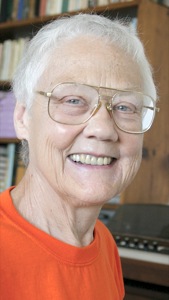-
- Barbara Gittings dies
- Crist thinks GOP shouldn’t spend money on marriage amendment
- Defrocked pastor’s church supportive, hopes to change rules on same-sex relationships
- McCain courting Christian conservatives – but will they take him?
- Study: adoptive parents invest more in their children
- HIV patients smoking marijuana eases pain, scientists report
- National News Briefs
- World News Briefs
national
Barbara Gittings dies
Gay rights pioneer succumbs to breast cancer at age 75
Published Thursday, 22-Feb-2007 in issue 1000
One of the nation’s earliest and longest serving gay rights activists has died. Barbara Gittings succumbed to breast cancer at the age of 75 in Philadelphia on Feb. 18.
The Daughters of Bilitis (DOB) was founded in San Francisco in 1956 by Del Martin and Phyllis Lyon as the first lesbian rights organization and an alternative to the bars which were then subject to police harassment and raids. Sodomy was illegal in all 50 states until Illinois became the first to repeal their’s in 1962.
Gittings established the New York City chapter of DOB in 1958 and was its first president. She served as editor of DOB’s The Ladder, the first lesbian publication with national distribution, from 1963 to 1966.
Phyllis Lyon said she and Martin first met Gittings when she visited San Francisco in the late 1950s. They met again in New York in 1958 at the national convention of the early gay rights group the Mattachine Society, and that led to the founding of the N.Y.C. chapter of DOB. Lyon called her “a really wonderful person who was very sharp and had a great sense of humor.”
But it wasn’t always a bed of roses. Gittings’ delay in putting together a 1966 issue of The Ladder led Martin to pull the magazine from her control, and led to strained relations. The magazine was the only way to promote the upcoming DOB conference in San Francisco. It would prove to be a landmark event with unprecedented numbers of local officials addressing the GLBT community. Lyon said those wounds healed with time, and they were in regular contact with each other over the years.
Gittings was among a handful of people who participated in the first public gay rights demonstrations. She picketed the White House, Civil Service Commission, Pentagon and Independence Hall in Philadelphia on July 4, 1965.
Gay icon Frank Kameny recalled her as being “one of the few activists who has been around longer than I.” He founded the Washington, D.C., chapter of the Mattachine Society in 1961 and does not remember how they first met, but he knows they had frequent interaction while Gittings was editor of The Ladder.
“Things were heating up but had not yet reached their peak” in 1965 in terms of social protest over civil rights and Vietnam, said Kameny. “At that point, picketing at the White House was the expression of dissent par excellence.” It got so congested that police assigned groups particular spots in front of and along the sides of the White House compound.
“Those demonstrations put the issue of gay rights on the table in ways that it hadn’t been done before,” said Ken Sherrill, professor of political science at Hunter College. “They said that this was a fit subject for discussion.”
Gittings would serve on the founding boards of directors of many organizations, including the National Gay [and Lesbian] Task Force (1973) and the Gay Rights National Lobby (1976), a precursor to the Human Rights Campaign Fund.
“She exuded this incredible warmth and friendliness,” said Sherrill, adding that Gittings was the glue that helped keep together often contentious organizations during the early phase of the movement. He first met Gittings through the founding of the short-lived Gay Academic Union in 1973. “She was a deeply principled, highly courageous person, but also warm and focused. If she had any enemies, I never met them.”
Gittings was a librarian by profession and from 1971 to 1986 led the Gay Task Force of the American Library Association, editing gay reading lists such as the “Gay Bibliography.”
In the pre-Internet days, the library was one of the main ways that young people could find information about homosexuality, says Sherrill. “It was important to have materials about our lives and experiences available.”
Kameny last saw Gittings in October when both were honored by the American Psychiatric Association for their work in getting the organization to “delist” homosexuality as a mental illness in 1973. He said she looked frail from the cancer therapy she was undergoing, but she managed to keep herself amazingly active until the end.
The ever analytical Kameny called her “a very effective gay pioneer.”
Most GLBT Americans probably came to know Gittings through her appearances in documentaries on the community such as Before Stonewall and Gay Pioneers.
Gittings is survived by her life partner of 46 years, activist and historian Kay Tobin Lahusen. She asked that donation in Gittings’ memory be made to Lambda Legal. A memorial service is being planned.
|
|
Copyright © 2003-2025 Uptown Publications


